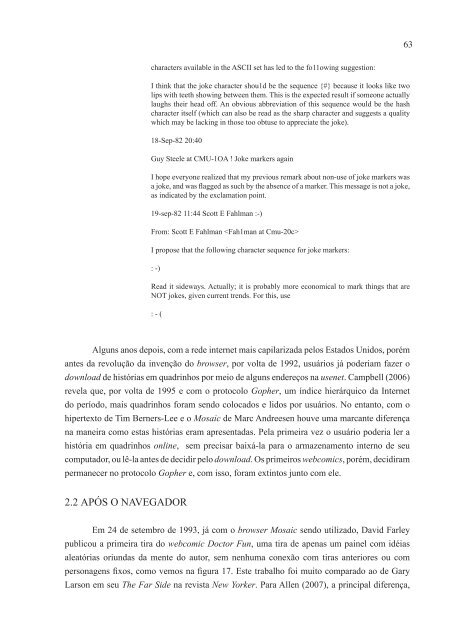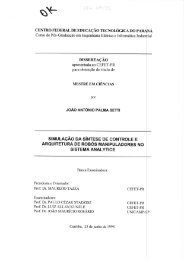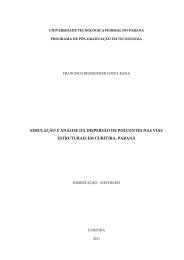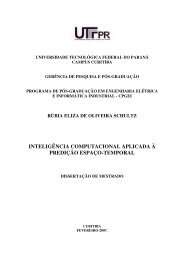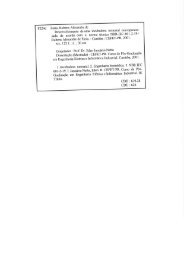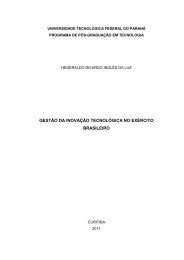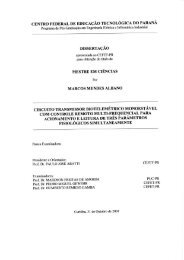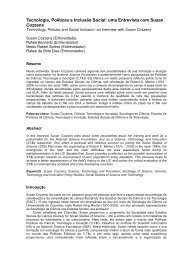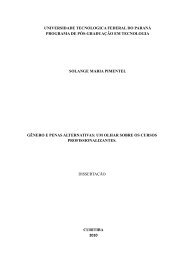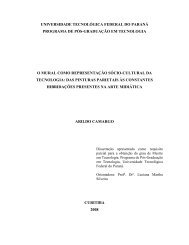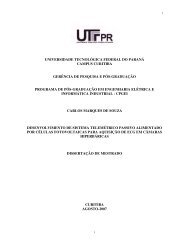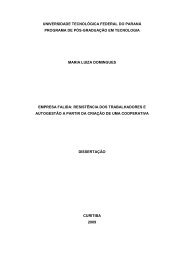tecnologia e intera - UTFPR
tecnologia e intera - UTFPR
tecnologia e intera - UTFPR
Create successful ePaper yourself
Turn your PDF publications into a flip-book with our unique Google optimized e-Paper software.
63<br />
characters available in the ASCII set has led to the fo11owing suggestion:<br />
I think that the joke character shou1d be the sequence {#} because it looks like two<br />
lips with teeth showing between them. This is the expected result if someone actually<br />
laughs their head off. An obvious abbreviation of this sequence would be the hash<br />
character itself (which can also be read as the sharp character and suggests a quality<br />
which may be lacking in those too obtuse to appreciate the joke).<br />
18-Sep-82 20:40<br />
Guy Steele at CMU-1OA ! Joke markers again<br />
I hope everyone realized that my previous remark about non-use of joke markers was<br />
a joke, and was flagged as such by the absence of a marker. This message is not a joke,<br />
as indicated by the exclamation point.<br />
19-sep-82 11:44 Scott E Fahlman :-)<br />
From: Scott E Fahlman <br />
I propose that the following character sequence for joke markers:<br />
: -)<br />
Read it sideways. Actually; it is probably more economical to mark things that are<br />
NOT jokes, given current trends. For this, use<br />
: - (<br />
Alguns anos depois, com a rede internet mais capilarizada pelos Estados Unidos, porém<br />
antes da revolução da invenção do browser, por volta de 1992, usuários já poderiam fazer o<br />
download de histórias em quadrinhos por meio de alguns endereços na usenet. Campbell (2006)<br />
revela que, por volta de 1995 e com o protocolo Gopher, um índice hierárquico da Internet<br />
do período, mais quadrinhos foram sendo colocados e lidos por usuários. No entanto, com o<br />
hipertexto de Tim Berners-Lee e o Mosaic de Marc Andreesen houve uma marcante diferença<br />
na maneira como estas histórias eram apresentadas. Pela primeira vez o usuário poderia ler a<br />
história em quadrinhos online, sem precisar baixá-la para o armazenamento interno de seu<br />
computador, ou lê-la antes de decidir pelo download. Os primeiros webcomics, porém, decidiram<br />
permanecer no protocolo Gopher e, com isso, foram extintos junto com ele.<br />
2.2 Após o NAVEGADOR<br />
Em 24 de setembro de 1993, já com o browser Mosaic sendo utilizado, David Farley<br />
publicou a primeira tira do webcomic Doctor Fun, uma tira de apenas um painel com idéias<br />
aleatórias oriundas da mente do autor, sem nenhuma conexão com tiras anteriores ou com<br />
personagens fixos, como vemos na figura 17. Este trabalho foi muito comparado ao de Gary<br />
Larson em seu The Far Side na revista New Yorker. Para Allen (2007), a principal diferença,


